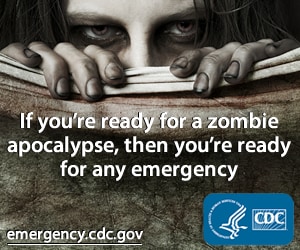June 16: Shannyn and I met with Kelly Jimenez and Patty Dietz to learn a little more about our project and how it ties in to the Chesapeake Bay restoration project. We learned that the E. coli counts we are doing help Prince William County track where pollution may be entering the waterways. These counts are also useful because every county needs to have a permit to discharge storm water, and this monitoring is one of the requirements for obtaining the permit. What this also tells us is if there is any illegal dumping occurring along the waterways. If the Department of Environmental Quality sees a hotspot from our citizen monitoring they will do an in-depth study in that area.
With the passing of the Chesapeake Bay Act, more attention is being focused on sediment and nutrients than on bacterial contamination, but our work is integral in helping the state of Virginia determine TMDL for tributaries that will eventually become the source of drinking water for Prince William County, and ultimately end up in the Bay. We learned a great deal about the new regulations and some new ideas for helping to protect the Chesapeake Bay Watershed.
We also learned some great information on how development is affecting water pollution levels. One of the major factors is that more development means less absorption of precipitation into the ground. The runoff from parking lots and streets runs directly into area streams via the storm water drains. Patty also educated us on some of the issues dealing with stormwater management, including the fact that older neighborhoods were built before any regulations came forth on stormwater management.
 June19: PWSWCD had a booth at the Farmer's Market in Occoquan on Saturday. We had a lot of fun teaching kids and their parents about ways to reduce water contamination using Kelly's fun Watershed Model. We also took buckets of water from the Occoquan River and let kids test the water for dissolved oxygen, pH, temperature, and clarity.
June19: PWSWCD had a booth at the Farmer's Market in Occoquan on Saturday. We had a lot of fun teaching kids and their parents about ways to reduce water contamination using Kelly's fun Watershed Model. We also took buckets of water from the Occoquan River and let kids test the water for dissolved oxygen, pH, temperature, and clarity. We had a wide age range of participants, which was fun because it offered more of a challenge in trying to figure out how to talk about all of this science so they would understand. Since we were dealing mostly with fairly young kids, we had to ask questions like: How to fish breathe under the water? What if there isn't enough air to breathe? What if the water is too hot or too cold? By looking at this water do you think they can see where they are going? Do they have enough air to breathe? Do you think they could live if they had to swim in acid? We got some pretty great answers and made some contacts with other people interested in water quality. Overall, I'd rate the day 9 out of 10, and only because it was so blazing hot!
 June 26: Macroinvertebrate Identification class held in Manassas. Here I met Nancy Berlin, a Master Gardener and Save Our Streams coordinator. SOS volunteer taught us how to identify different macroinvertebrates that live in area streams.
June 26: Macroinvertebrate Identification class held in Manassas. Here I met Nancy Berlin, a Master Gardener and Save Our Streams coordinator. SOS volunteer taught us how to identify different macroinvertebrates that live in area streams.After the lecture, we got to try our hand at identifying many different bugs, all in various stages of life. Somehow I can't seem to stay away from the microscopes, even on the weekends! Eden and Kelly really got into the spirit of things, and we all had a great time.
 My favorite bug was the Caddis Fly because of the interesting cases they make. I remember as a kid, helping one of my 4H friends tie a caddis fly to be used as a fly fishing lure. It is still my favorite strange little water creature!
My favorite bug was the Caddis Fly because of the interesting cases they make. I remember as a kid, helping one of my 4H friends tie a caddis fly to be used as a fly fishing lure. It is still my favorite strange little water creature!The next few weeks are a little slow leading up to our next water collection July 13-14. It will be a good time to do some research and write an article or two.




